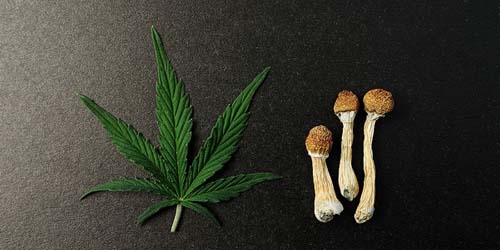
Tripping, spacing, getting stoned, going out and getting high - what does it all mean? It is obvious that drug use leads to altered states of consciousness, but also to creative use of language. Are the words that describe the effects synonymous? Is getting high the same as tripping, or is tripping exclusively the property of psychedelics? It is time to look at what exactly our smart drugs do to you and whether there are any similarities between types of drugs such as weed, XTC and magic mushrooms.
In this article:
- Tripping: The Classic Psychedelics
- What is Tripping?
- MDMA / Ecstacy
- About Weed, Edibles (Space cake) and being stoned out of your mind
- Conclusion
Tripping: The Classic Psychedelics
In the large list of drugs types we have mentioned a number of different categories. The classic psychedelics in that list do have similarities: magic mushrooms, magic truffles, DMT, ayahuasca, mescaline cacti [2] and LSD belong to the so-called serotonergic psychedelics. These types of drugs therefore work by acting on parts of the brain that are normally receptive to serotonin. If you want to know what the receptor for these drugs is called, you can search the internet for 5-HT2A.
Serotonin is a neurotransmitter that controls our locomotion, digestion, sleep and other functions. When functioning normally, serotonin is released in doses and gives us, among other things, euphoric feelings.
When these psychedelics fit like keys in a lock that normally should contain serotonin, the proverbial bunch of keys creates a carnival in your upper chamber. Because all these substances do the same thing: they put a system in your head on the back burner with which you can normally function well in daily life: the default mode network. That is why you get all sorts of crazy ideas, see things that are not there and look out of your eyes like an uninhibited, innocent baby; as if you are seeing it all for the first time...
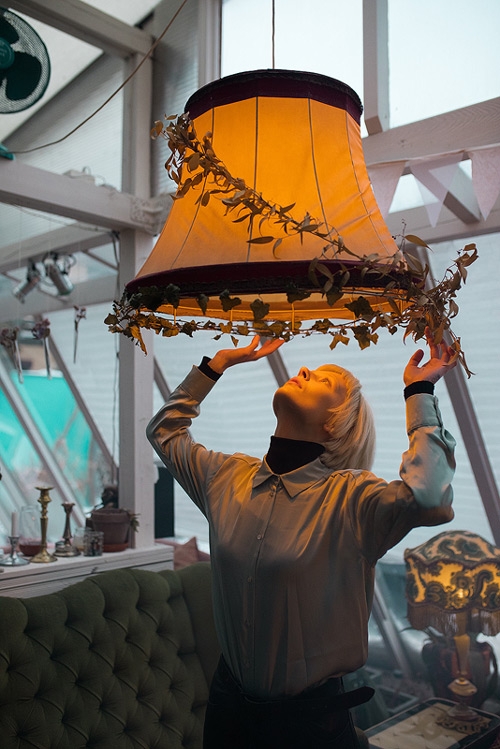
As if you’re seeing it all for the first time.
Real tripping is full of hallucinations. All psychedelics start with a bit of tiredness and yawning. Sometimes you also get a laughing kick or become emotional in another way. Some of these drugs, like ayahuasca, also make you extremely nauseous. Music can be experienced more intensely and with every higher dose you get a little more. Colors become more vivid and then they start to dance in colourful, often geometric patterns. These patterns turn into visions and the first hallucinations dance through your room. Fairies, aliens, bears and snakes move around the room until you realize that you have arrived on another planet. Everything is different here: including you. It is a true mindfuck, which in some cases can lead to spiritual experiences or a bad trip. In the second scenario, it is suddenly no longer fun and you want to return to earth. Done with those emotions and crazy ideas!
Tripping and Tolerance
There is another reason why we can classify the psychedelics mentioned above in the same category. With all these drugs you build up a tolerance. This means that you need more and more to reach the same effect or level. You also build up a cross-tolerance. So if you use magic mushrooms today and cacti tomorrow, the cacti will not work as well compared to the scenario where you had used nothing the day before. For this reason the classical or serotonergic psychedelics are hardly physically addictive.
What is Tripping?
The word tripping comes from the verb "to trip", meaning to go on a journey. And that is exactly what psychedelics do to you: you go on a psychedelic journey. But beware: many of the effects you read about here and elsewhere on the web, are highly dependent on dosage, set and setting. Click on the links to learn more about it.
We at Dutch-Headshop use "tripping" to refer to the effects you can expect after taking for example magic truffles or san pedro. Other online smartshops, addiction help Jellinek, the Trimbos institute and other official channels also use the same wording.
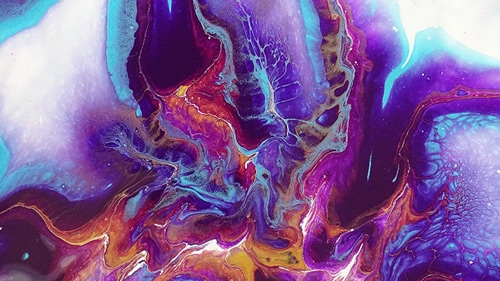
The fact that the wall seems to melt colorfully only comes about with a higher dosage.
We value the correct use of these terms, so that we can talk to each other about our experiences. This way you also know what to expect with some types of drugs. The 2C-B effect, bufotenin, DOx, LSA seeds and salvia will also make you trip. But the quality, duration and "taste" of such a trip differs for all types of drugs. Salvia for example is said to be almost incomparable to the nice trip that magic mushrooms often give you, while magic mushrooms and DMT are pretty close to each other in terms of content.
Funny to know: to be called "psychedelic" by science, a substance must bind to the 5-HT2A receptor and increase its activity [5].
Tripping and Dreaming
If you have never taken a serious dose of psychedelics, tripping can best be compared with intense dreaming. Dreams can also go in any direction in no time and you can sometimes have the feeling that you have experienced a year in a dream. You can read more comparisons with dreams in this extensive article. Are you interested in plant extracts that can influence your dreams? Then check out our lucid dreaming tests on dream herbs!
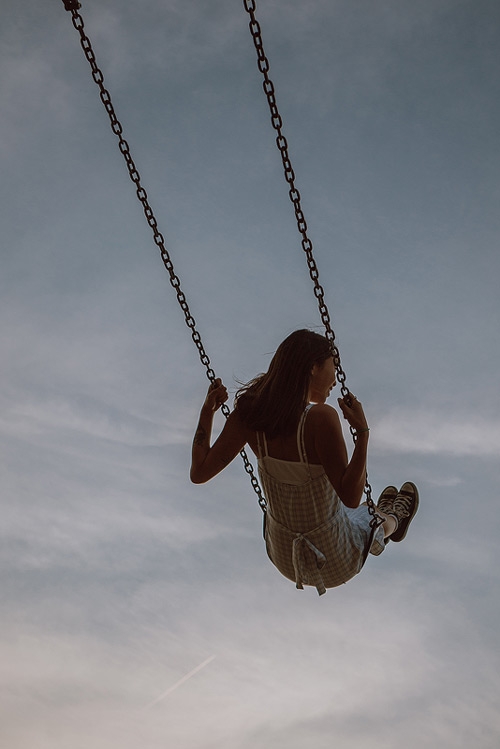
The sensation of flying: is it a dream or a psychedelic trip?
Not for everybody
Now we sound as if everyone should try it, but psychedelics and in fact all other drugs are definitely not for everyone. Some people with a history of mental disorders or those kinds of complaints in their family should avoid them altogether. There is a chance that you will not be able to distinguish the reality from the trip and that you will have difficulty adapting to normal life again.
MDMA / Ecstasy
MDMA, the active substance in ecstasy, is, like several psychedelics, under close investigation by the medical world. At Johns Hopkins University in America, for example, it is being investigated whether the substances are of value in post-traumatic stress syndrome and depression. Although MDMA is not considered a psychedelic, it does have an effect on serotonin levels. The pills release serotonin in the brain, but also dopamine and norepinephrine (adrenaline) [1].
The effects of ecstasy are therefore closely related to what you see when a bizarre amount of these bodily substances are coursing through your body at once. For example, at the climax of sex, winning gold in top sport or the birth of a child. Euphoria, extraversion, love, more energy, increased empathy and a sense of belonging are all part of it. MDMA can also influence your sensory perception. Colors and sounds become more intense.
Tuesday dip
The fact that MDMA releases a lot of serotonin also has adverse effects. That is why ecstasy pills (which contain MDMA) are not without their dangers. One of the dangers is that you will quickly run out of serotonin. This is how the serotonin dip or Tuesday dip occurs. You feel tired, lifeless and often even depressed. Although such a Tuesday dip often lasts only a short time, it is certainly no fun. The greatest danger arises when you combine serotonin boosters with MDMA. Certain prescribed antidepressants, but also 5-HTP and L-tryptophan, should certainly not be taken in combination with a pill. This can lead to a chronic serotonin deficit.
We won't tell you anything about antidepressants; after all, we're not doctors. However, we can tell you when you can take 5-HTP or L-tryptophan . Leave at least 24 hours between taking drugs and one of the two stimulants. That way you avoid dangerous situations.
MDMA vs. Psychedelics
However, MDMA is not a trip drug like the previously mentioned psychedelics. You will not see things that are not there and the colourful patterns do not appear. MDMA does not seem to interfere with our perception, but as said before, it releases substances in our body that do that for us. In contrast to, for example, magic mushrooms and other psychedelics, which actually distort your perception by calming the default mode network. At a low dose, the effects may seem similar, but a higher dose of magic mushrooms or DMT will show you incredible worlds where everything seems connected.
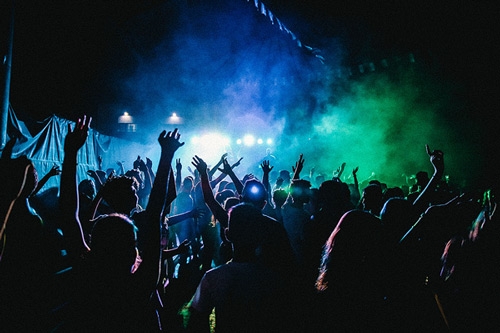
While XTC may be fun at a party, we do not recommend taking magic mushrooms there.
About Weed, Edibles (Space cake) and being stoned out of your mind
Weed works completely differently from all the drugs mentioned above. Weed, as you probably know, is a plant that produces substances which, when heated, have certain effects on you. Weed can certainly in higher doses lead to unbridled creativity, a fusion of the senses (synesthesia) and the surfacing of unconscious emotions, but the substances in weed do not have a real hallucinogenic effect.
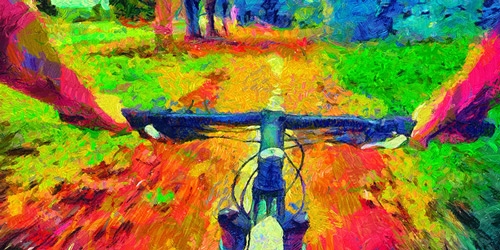
A good example of what your environment can look like with (enough) LSD or magic truffles, but not with a pile of weed in your system.
How does weed work?
Although there are more than 500 different substances in a average gram of weed, the most important and most researched of these substances are THC and CBD. THC and CBD do nothing at all when it comes to the "psychedelic" serotonin receptors. This is because THC mainly sticks to another type of receptor (CB1). CBD, on the other hand, prefers to stick to the CB2 receptor. However, as soon as THC hits the CB1 receptor, it causes all the familiar feelings we know from smoking a joint. From the nice relaxed euphoria to the red eyes and the munchies.
Recent studies show that CBD [3] and THC also do something with the serotonin household. But not directly, and this has only been studied in rats that were frequently (chronically) given weed [4]. The THC study gives indications that smoking a lot of joints at a young age can lead to schizophrenia and psychosis at a later age, but not that THC leads to tripping.
Getting High and being Stoned
A high can be experienced from different kinds of drugs. Even running can give you the so-called runner's high. THC, by the way, resembles the substance that is released in our bodies during such a runner's high: anandamide. And you don't even need to take anything!
Being high is characterized by the fact that you feel like you are on a cloud. You feel good, unconcerned and you go through life with a smile. Being high often tastes like more and the effect mainly takes place in your head. Sativa weed is said to get you high.
Being stoned, on the other hand, is primarily a physical sensation sought after by passionate indica users. The numbing, relaxing and sometimes downright narcotic feeling that being stoned can give you is desirable for medicinal use, but also for just chilling out.
A combination of stoned and high, however, is very common in any weed. Because, as we said, there are more than 500 substances in weed that can give you that feeling you are looking for. And what's more, indicas and sativas are hybridized, making pure indica or sativa weed seeds very unique.
Everyone experiences drugs differently, but becoming one with the universe is often only seen with real psychedelics.
Can you hallucinate on space cake?
That is physically impossible. At least, as long as the cake doesn't contain magic mushrooms ;) As we have described above, THC is not a psychedelic. When eating a space cake or other edibles , THC is briefly converted into another substance: 11-OH-THC (11-Hydroxy-Δ9-THC).
At the same Johns Hopkins University in America they did a study on the different effects of drugs like salvia and magic mushrooms, but also weed and different forms of ingestion [6]. Smoking, vaping and taking weed orally were compared in standardized doses. Participants were asked to answer a number of different questions in different categories. They were tested for intensity, change in body temperature and other bodily feelings, anxiety, tension, laughing fits, euphoria or crying fits, visual and auditory hallucinations, change in speed of thought or personal insight, loss of control, free will or feeling of going crazy.
Visual and auditory hallucinations, as with magic mushrooms and LSD, were absent in all cases: whether smoking pot, vaping or eating a space cake. Except for one participant. This participant had the feeling of total loss of control and reported things that were not there. An exception? Or are there more people who have eaten a space cake and had encounters with strange creatures?
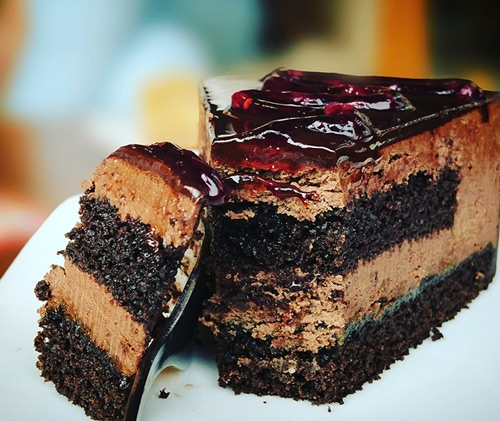
A space cake is not for everyone - it can keep you high for much longer than a joint!
The research concludes: “However, the hallucinatory experience in this case was qualitatively different than that typically experienced by participants receiving classic and atypical hallucinogens, suggesting that the hallucinatory effects of cannabis may have a unique pharmacological mechanism of action.”
Brief summary: because the described effects of hallucinations from a space cake are indeed different in nature than for instance magic mushrooms but also salvia, there seems to be a different mechanism behind the hallucinogenic effect. Moreover, it was only one case in which the "space cake" was experienced more strongly than in the others. It is known that in one out of twenty people a space cake is up to ten times heavier than in others. So maybe this man was oversensitive.
Always have the right THC dosage in your space cake or other edibles? Check this space cake calculator!
Conclusion
It seems that not everyone reacts the same way to any drug. Some people don't bat an eye at a cup of coffee, while others don't notice anything at all when eating a heavy dose of space cake. People and their sets are much different, but also the setting makes an incredible difference in the use of drugs.
Some drugs are very similar in their basis. Take the classic psychedelics, for example. You can say of these trip drugs that they take you on a psychedelic journey. In other words: they just make you trip really hard! Although some effects of other drugs are similar to these often banned substances, "tripping", with all its hallucinations, is indeed reserved for psychedelics.
Sources:
- [1] Torre, R de la. et al. “Human pharmacology of MDMA: pharmacokinetics, metabolism, and disposition”. Apr. 2004. PMID: 15228154. DOI: 10.1097/00007691-200404000-00009. pubmed.ncbi.nlm.nih.gov/15228154
- [2] Dinis-Oliveira, R.J. Lança Pereira, C. Dias da Silva, D. “Pharmacokinetic and Pharmacodynamic Aspects of Peyote and Mescaline: Clinical and Forensic Repercussions”. 2019. PMID: 30318013. DOI: 10.2174/1874467211666181010154139. pubmed.ncbi.nlm.nih.gov/30318013
- [3] Franklin, J.M. Carrasco, G.A. “Cannabinoid receptor agonists upregulate and enhance serotonin 2A (5-HT(2A) receptor activity VIA ERK1/2 signaling”. 8 Dec. 2012. PMID: 23151877. DOI: 10.1002/syn.21626. pubmed.ncbi.nlm.nih.gov/23151877
- [4] Ibarra-Lecue, I. et al. “Chronic cannabis promotes pro-hallucinogenic signaling of 5-HT2A receptors through Akt/mTOR pathway”. Nature. 27 Apr. 2018. Neuropsychopharmacology 43. 2028–2035 (2018) nature.com/articles/s41386-018-0076-y
- [5] Nichols, D.E. “Psychedelics”. Apr. 2016. Pharmacological Reviews. DOI: 10.1124/pr.115.011478 pharmrev.aspetjournals.org/content/68/2/264
- [6] Barrett, F.S. et al. “Hallucinations” Following Acute Cannabis Dosing: A Case Report and Comparison to Other Hallucinogenic Drugs. Mrt. 2018. PMID: 29682608. DOI: 10.1089/can.2017.0052. pubmed.ncbi.nlm.nih.gov/29682608